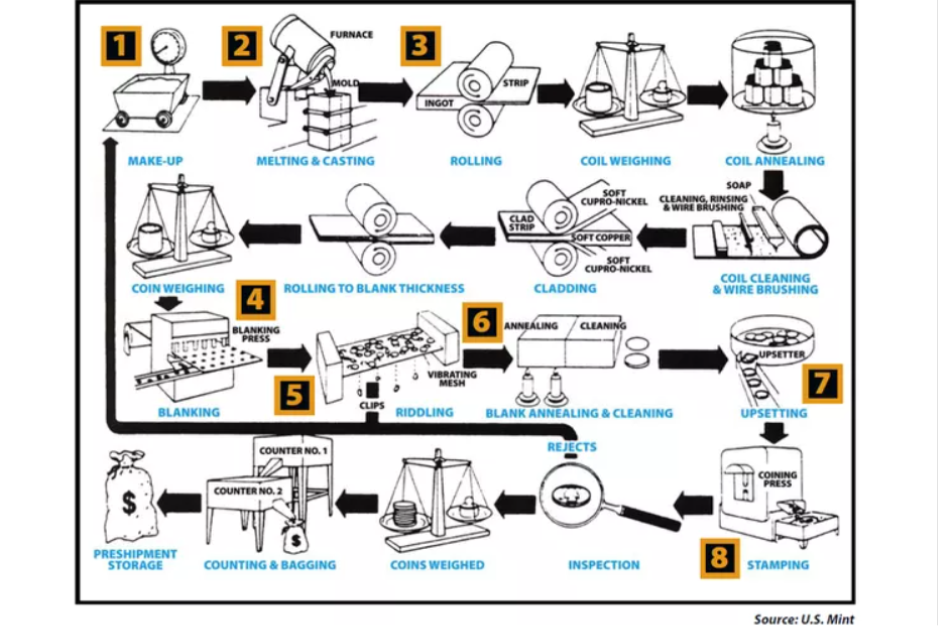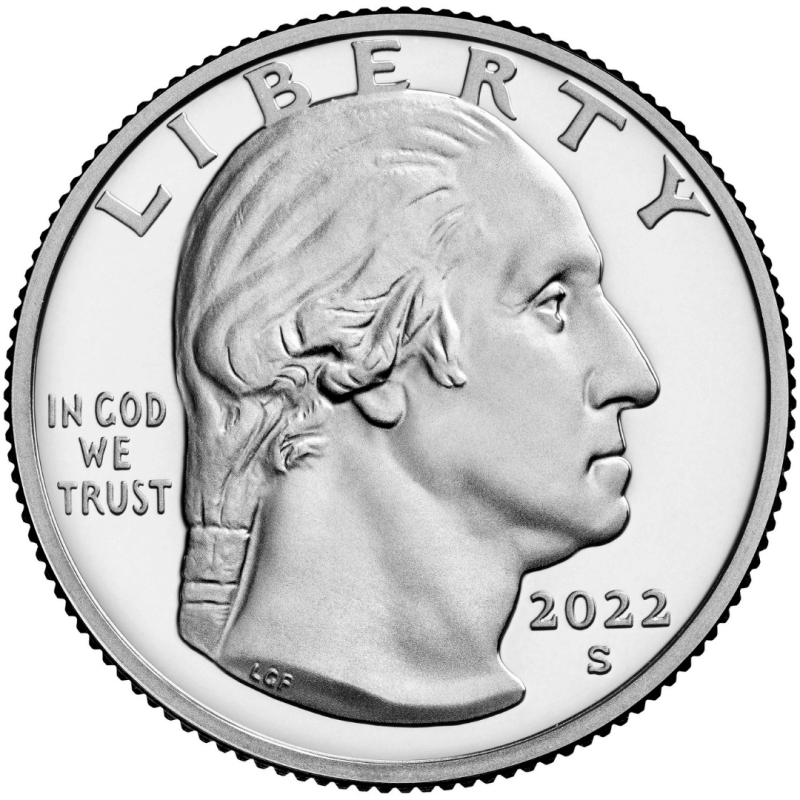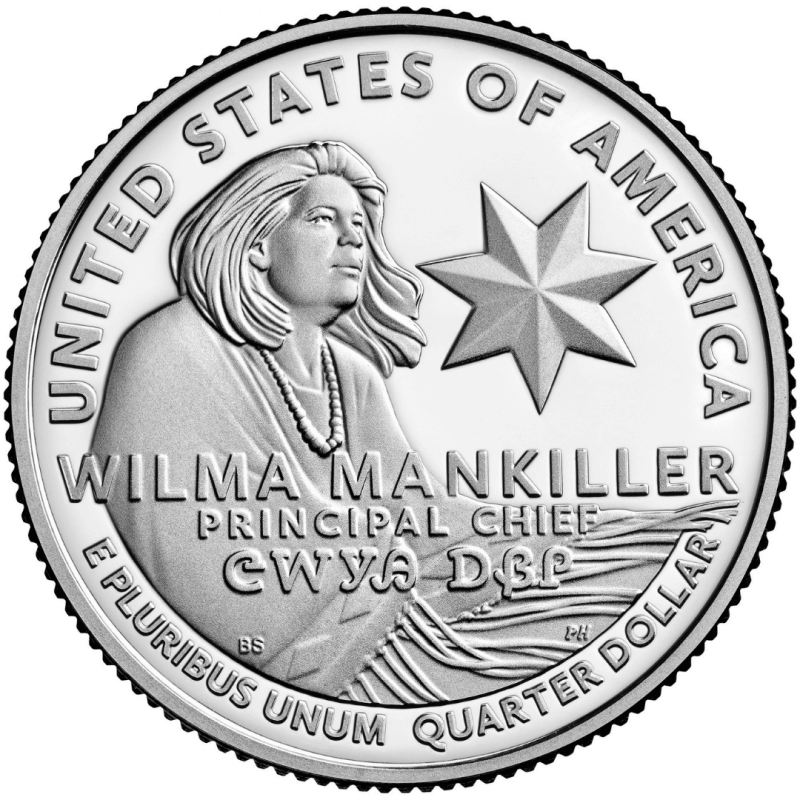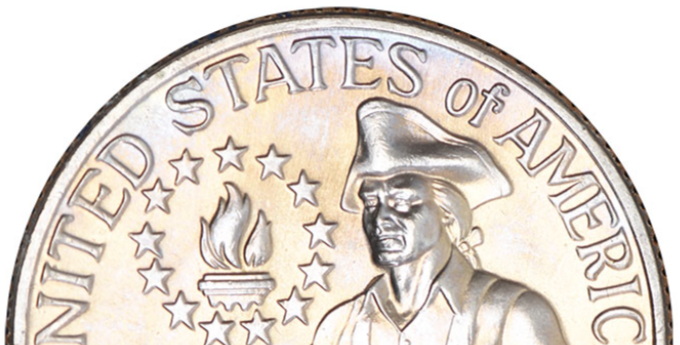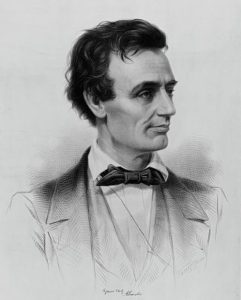Coin Collecting Merit Badge Requirements
This page gives simple explanations and hints on how a scout, usually ages 11-17 could complete the requirements to earn his Coin Collecting Merit Badge. Further information is available in the Coin Collecting Merit Badge Booklet. The booklet is available at scout service centers (council offices) and in troop libraries.
Coin Collecting Merit Badge Requirements
1: Understand how coins are made, and where the active U.S. mint facilities are located.
To start off we have some basics on how the things we collect are made. This includes the designing process and die production as well as the actual mechanics of the milling of strips, making of blanks, and striking finished coins. Knowledge of the mint locations is a natural building block for the concepts of mintmarks.
How are coins made?
The metal used to make coins starts in a solid form called an ingot. This ingot is then fed into a rolling mill that exerts pressure and the ingot bar is reduced in thickness from over six inches to a long strip of metal the thickness of the final coin.
Since 1965, U.S. dimes, quarters, half dollars, and dollars have been made from a core of copper, layered between and bonded to two thinner outer layers of copper-nickel (except the current Sacagawea dollar). Cents since 1982 have been made of a zinc core plated with copper.
Once the strips, called coils, are rolled to the proper thickness, they are about 13 inches wide and over 1,500 feet in length. They are then fed through a blanking press, which punches out circular discs, called blanks. The leftover strip, now punched full of holes, is called webbing and is shredded and recycled for use in future coinage.
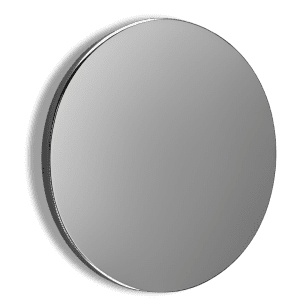
The blanks are now ready to be placed into a coining press, where dies strike the image and legends on them. The raised edges in the upsetting process assist in the striking of uniform flat edges at the rim, so that coins can be “stacked.”
In the United States, the stamping of the official image at one of the U.S. Mints makes them coins, and the new coins are inspected, counted by weight, and bagged for shipment to the 12 Federal Reserve banks, and then to your local bank for distribution.
Blanks are the approximate size of a finished coin. They are heated in an annealing furnace to soften them, and then they are run through a washer and dryer to remove any stray grease. The shiny blanks are sorted on a riddler to screen out any that are the wrong size or incomplete shape. The clean blanks are sent through an upsetting mill, which squeezes the edges, giving them a slightly raised surface.
The blanks are now ready to be placed into a coining press, where dies strike the image and legends on them. The raised edges in the upsetting process assist in the striking of uniform flat edges at the rim, so that coins can be “stacked.”
In the United States, the stamping of the official image at one of the U.S. Mints makes them coins, and the new coins are inspected, counted by weight, and bagged for shipment to the 12 Federal Reserve banks, and then to your local bank for distribution.
U.S Mints
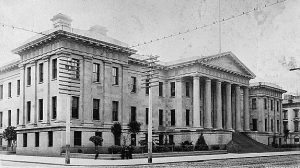 The Old San Francisco Mint
The Old San Francisco Mint2: Explain these terms: obverse, reverse, reeding, clad, type set, date set.
The Boy Scout Coin Collecting Merit Badge booklet explains many more terms specific to the hobby, but these six were selected, as they are cornerstones to further requirements and a basis for the talk of the hobby. For a complete glossary of terms, consult the merit badge booklet.
Obverse: the front of a coin, usually the side with the date or head. When you flip a coin and call “Heads,” this is the side you want.
Reverse: the back of a coin, usually the side without a date or a head. When you flip a coin and call “Tails,” this is the side you want.
Reeded Edge: an edge with raised vertical or diagonal marks designed to make it obvious if anyone has removed any metal from the edges. This was important when coins were valued for their full weight in precious or semi-precious metal. Modern U.S. coins with a reeded edge include the Roosevelt dime, Washington quarter and Kennedy half-dollar.
Clad: coins made of layers of metal. Examples include our modern Dimes, Quarters, Half Dollars, and One Dollars that have centers of copper and outer layers of a copper-nickel alloy.
Type Set: each kind of coin from any given time and place. For example, a 20th century U.S. Type Set would include each design of cent, nickel, dime, quarter, half dollar and dollar coin minted in the United States from 1900 to 1999.
Date Set: a set of the same type of coins with an example from each date that particular type of coin was minted; for example a date set of Lincoln “Wheat-back reverse” Cents would include an example from each year 1909 to 1958.
3: Know three different ways to store a collection, and describe the benefits, drawbacks and expense of each of these methods.
Storage of a Collection
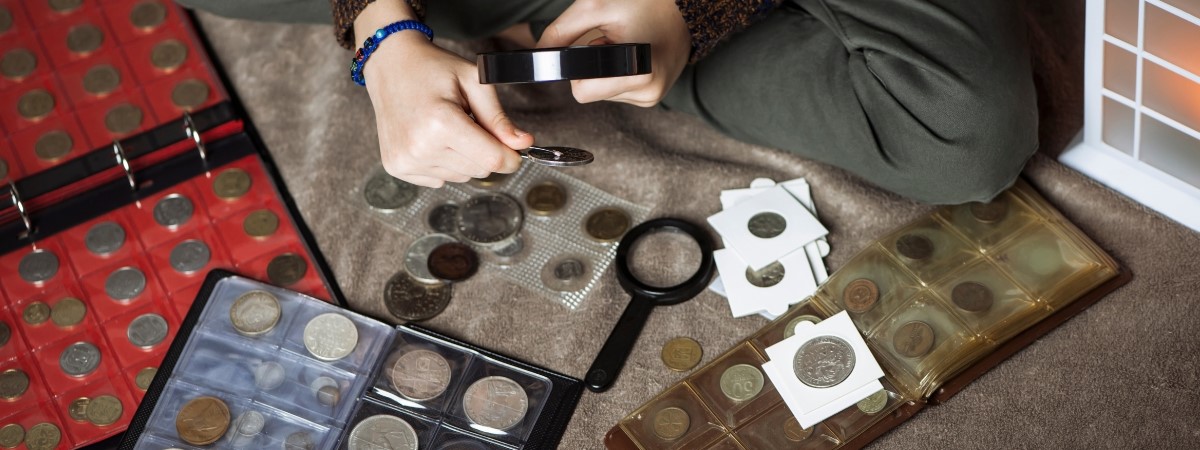
How do you store your collection of favorite coins? In a jar? box under your bed? or maybe in a bureau drawer? Coins that are hoarded in a box or jar can get scratched, rubbed and dented, lowering the grade and condition. NEVER glue or tape coins to anything! This will damage the coin and ruin any collector value. Collector coins should be organized and properly stored to provide protection for the coins and information about the collection. This will keep your investment safe and you will enjoy your collection more as you work to organize it.
Many people are familiar with cardboard folders that hold a specific type of coins like the 50-State Quarters. This is a good, inexpensive way to organize and display a date set of coins collected from circulation or pocket change. It is not a good way to store valuable collector coins as the cardboard holders can tarnish the coins and do not offer protection to the surfaces of the coins. Pushing the coins into the round holes also leaves oil from your fingers on the surface of the coins and permanent marks may develop. It is best to wear special cotton gloves when handling the coins and placing then into the holders.
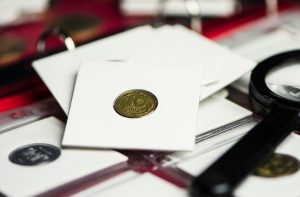
There are several different types of plastic holders, slightly more expensive than cardboard or paper. The most common is a 2 x 2 holder or “flip” that has two pockets, one for a coin, and the other for a paper insert with information about the coin. When folded together, the size is 2-inches by 2-inches and they fit into the same special boxes and albums that hold cardboard 2 x 2 holders.
A danger from certain plastic holders is PVC, an ingredient in the plastic that is used to soften the material. PVC will turn coins slimy green over a period of time. Either use PVC-free holders or put the coin into a small PVC free “poly bag” or 2-piece “coin-tain” before placing it into the plastic holder. Soft plastic holders (with PVC) can be used for short-term storage. They are easier to handle than the stiffer PVC-free holders. Saflips are PVC-free inert flips that optically clear and will not crack or discolor.
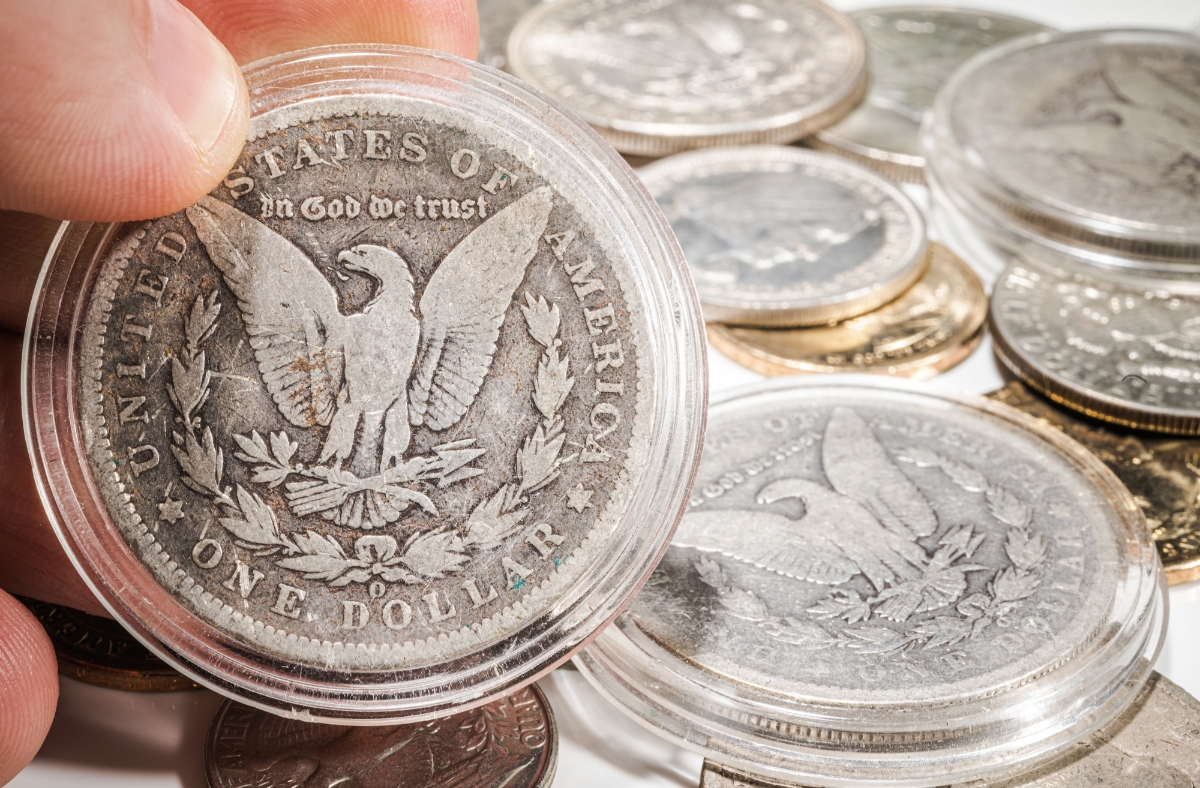
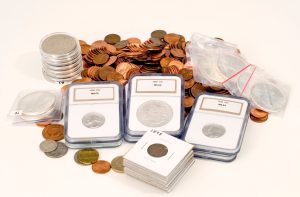
Expensive collections are usually stored in a bank or vault. It’s important to monitor the temperature and humidity and check the condition of the coin’s surfaces on a regular basis.
4: Do each of the following and explain to your counselor the design features, designer name, designer initials, and where to find them for each item:
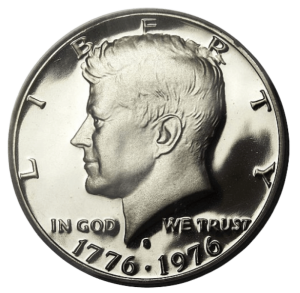 (a) Collect a one-cent coin from the year group: 1959-2008 (that is, dated between 1959 and 2008) and a one-cent coin from the year group 2010-present. Explain how and why the one-cent coins issued in 2009 were different from either of the other two year groups.
(a) Collect a one-cent coin from the year group: 1959-2008 (that is, dated between 1959 and 2008) and a one-cent coin from the year group 2010-present. Explain how and why the one-cent coins issued in 2009 were different from either of the other two year groups.(b) Collect two five-cent coins, one from each of these year groups: 1959-2003 and 2006-present. Explain how and why the five-cent coins issued in 2004-2005 were different from either of the other two year groups.
(c) Collect a ten-cent coin from 1965-present.
(d) Collect a twenty-five-cent coin from 1965-1998, two examples from the 50-State Quarter® /territories Program 1999-2009, two designs from the America the Beautiful® program 2012-2021 and two designs from the American Woman Quarter® program (2022-2024). Explain the purpose of each of those programs.
(e) Collect a half dollar coin from 1965-present.
(f) Collect a dollar coin from each of these design groups: Susan B. Anthony 1979-81; 1999; Sacagawea 2000-2008; U.S. Presidents 2000-2014.
Learn more about the specific coins selected by exploring the links below: https://www.usmint.gov/learn/
https://www.usmint.gov/learn/
https://www.usmint.gov/learn/
Similar pages for other denominations, also grouped as “Circulating Coins,” is available here: https://www.usmint.gov/learn/
5: Describe and discuss with your counselor the special reverse designs of the quarters, half dollar and dollar coin struck in 1975-1976 to honor the U.S. Bicentennial.
6: Identify for your counselor the people depicted on current currency: $1, $2, $5, $10, $20, $50, and $100 notes. Explain where United States currency is printed.
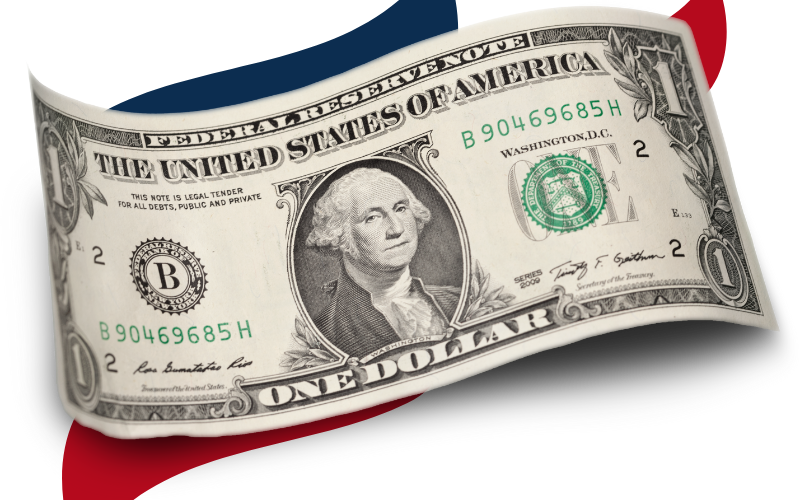
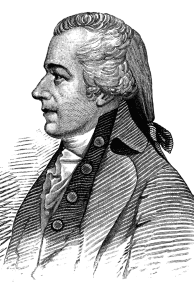 Alexander Hamilton was born in 1757 on the island of Nevis, in the Leeward group, British West Indies. He was the Secretary of the Treasury from 1789-95. He is pictured on the face of the 10-dollar note and the U.S. Treasury building is pictured on the back.
Alexander Hamilton was born in 1757 on the island of Nevis, in the Leeward group, British West Indies. He was the Secretary of the Treasury from 1789-95. He is pictured on the face of the 10-dollar note and the U.S. Treasury building is pictured on the back.Benjamin Franklin was famous as a scientist, an inventor, a statesman, a printer, a philosopher, a musician, and an economist. Today, we honor Ben Franklin on the 100-dollar note as one of our Founding Fathers and as one of America’s greatest citizens. Although he was born in Boston, the city of Philadelphia is remembered as the home of Ben Franklin. In Philadelphia, you can find both Ben’s gravesite and the Benjamin Franklin National Memorial. You’ll also find The Franklin Institute Science Museum.
KNOW MORE! Ben’s Guide to U. S. Government, The World of Benjamin Franklin, An Extraordinary Life, an Electric Mind, and Benjamin Franklin: A Documentary History.
7: Do ONE of the following:
(a) Collect and identify for your counselor 20 different world coins from at least 7 different countries. Identify the country, major design elements, and denomination of each.
(b) Collect and identify for your counselor 20 different world paper money from at least 7 different countries. Identify the country, major design elements, and denomination of each.
(c) Collect and identify for your counselor 20 different tokens and/or medals. Identify the issuer and use of each.
(d) Complete one of the following and report to your counselor what you experienced:
More helpful hints and resources!
818 North Cascade Avenue
Colorado Springs, CO 80903
Phone: (719)632-2646 or toll-free (800)367-9723
Website: www.money.org
Email: education@money.org
